- Home
- Oscar Wilde
The Uncensored Picture of Dorian Gray Page 5
The Uncensored Picture of Dorian Gray Read online
Page 5
When Wilde’s novel appeared in Lippincott’s in the summer of 1890, it was subjected to a torrent of abuse in the British press, chiefly on account of its latent or not-so-latent homoeroticism. British reviewers were virtually unanimous in condemning Wilde for what one termed “writing stuff that were better unwritten.”4 Two leading magazines, the St. James’s Gazette and the Scots Observer, hinted in their review pages that Wilde should be prosecuted for what he had written. As a consequence, Britain’s largest bookseller, W. H. Smith & Son, took the unusual step of pulling the July number of Lippincott’s from its railway bookstalls. Although some scholars have argued that the twenty-chapter version of 1891 represents the greater artistic achievement, most now accept that when Wilde revised and expanded the novel, many of the changes he made were, in the words of one eminent Wilde scholar, “dictated by expediency and not by artistic considerations.”5 Wilde—already leading a secret double life—had reason to be fearful. Five years later, at the height of his fame, he would be imprisoned for two years’ hard labor after being convicted of “gross indecency.” During the course of Wilde’s disastrous libel suit against Lord Alfred Douglas’s father, the Marquess of Queensberry, it was the more salacious thirteen-chapter Lippincott’s version that was used so damagingly against him in the courtroom. As Queensberry’s attorney, Edward Carson, brandished the pages of Lippincott’s Monthly Magazine, he took “great pains” to specify differences between the Lippincott’s version and the subsequent twenty-chapter version, referring repeatedly to the latter as “the purged edition” because of the greater frankness with which the Lippincott’s version treated sexual matters.6
If Edward Carson had possessed Wilde’s typescript, he undoubtedly would have made effective use of it in the courtroom, for it is even more explicit in its sexual allusions and references than the version published in Lippincott’s Monthly Magazine. Lippincott’s had a well-deserved reputation for publishing stories in the so-called Erotic School of American fiction.7 But even at the relatively liberal magazine, the story immediately raised concerns. Upon receipt of the typescript in Philadelphia, Stoddart consulted with colleagues and a number of close associates to determine whether, and if so in what form, the novel could be published, before himself making or overseeing a number of significant emendations to Wilde’s text, including the excision of material he feared was too graphic for the magazine’s readership. But not all the changes Stoddart oversaw can be fairly described as censorship. First, not surprisingly, Stoddart or his associates altered Wilde’s punctuation, capitalization, and spelling to conform to American usage and the magazine’s house style. Second, and more significant, as Stoddart and his associates worked their way through the typescript, they struck nearly 500 words from Wilde’s novel. They deleted a number of phrases or sentences, for instance, that make clearer and more vivid the homoerotic nature of the painter Basil Hallward’s feelings for Dorian Gray. In Chapter VII, Stoddart or one of his associates struck Hallward’s description of his portrait of Dorian as a kind of lovemaking: “There was love in every line, and in every touch there was passion.” In the same chapter, he deleted Dorian’s concluding reflection on Hallward: there was “something infinitely tragic in a romance that was at once so passionate and sterile.” Similarly, Stoddart or one of his associates removed references to Dorian’s female lovers, Sybil Vane and Hetty Merton, as his “mistresses.” A more detailed consideration of the changes overseen by Stoddart will follow; for the moment it is important to recognize that, insofar as the more substantial of those changes are concerned at least, the process of “purging” had begun even before the novel saw the light of day.
That Stoddart or his associates made alterations to Wilde’s text prior to publication has long been evident to the handful of scholars who have scrutinized the prepublication typescript. Wilde’s hand is distinct from those of at least two others who emended the typescript upon receipt in Philadelphia (that one of these hands was Stoddart’s can be inferred from comparisons with known examples of his handwriting, as Joseph Bristow has argued), and at least two previous scholars have given detailed consideration to the nature of the changes overseen by Stoddart.8 It is a curious fact in the history of the novel that Wilde’s typescript remained unpublished until 2011, when Harvard University Press first published it, given the general recognition among Wilde scholars that the Lippincott’s version was bowdlerized. In the Introduction to his 2005 edition of the novel for Oxford University Press, for example, Joseph Bristow writes that “Stoddart’s emendations make it plain that certain kinds of . . . references to sexual passion were unacceptable to Lippincott’s Magazine,” and he acknowledges Stoddart’s “unwillingness to permit explicit references to Dorian Gray’s illicit relations with women.”9 Moreover, in a note to his 1988 Norton Critical Edition (the first modern edition to reprint, in its entirety, the Lippincott’s text for an English-speaking readership), Donald Lawler describes Stoddart’s changes as a “series of bowdlerizations.”10 In the prefatory note to her 1974 Oxford English Novels edition of the book, Isobel Murray writes that “Stoddart far exceeded his brief in making changes for the Lippincott version after Wilde had passed the manuscript”; and in their recent fine study of Wilde’s writing practices, Oscar Wilde’s Profession, Josephine Guy and Ian Small write that “often Stoddart appears to be ‘censoring’ the text, on occasion striking out Wilde’s later thoughts and corrections.”11
No evidence survives to suggest that before publication Wilde saw, let alone approved, the changes Stoddart and his associates had made. As Guy and Small write, “we can be fairly certain that Stoddart did not consult Wilde about these revisions.”12 Indeed, it would have been highly unusual for Wilde to have been granted such an opportunity, since it was not then customary for American magazine editors to provide British authors with proofs. As N. N. Feltes argues, late-Victorian magazine editors on both sides of the Atlantic typically assumed a privileged position over authors as far as the production of the text itself was concerned; and as John Espey speculates, “the American system of editing gave the publisher far more authority than in England or on the Continent.”13 Even well-established fiction writers were forced to accept what Thomas Hardy called “the necessities of magazine publication”: and from the editor’s viewpoint, “control of the actual production . . . for a magazine or weekly newspaper did not need to be negotiated; it was a given.”14 In the months leading up to the novel’s publication, then, Wilde had neither the authority nor the opportunity to challenge the alterations made to his novel by its first editor. There exists little warrant for Joseph Bristow’s assertion that “all of the editorial emendations to the typescript have Wilde’s authority, since no evidence exists to suggest that Wilde refused to accede to any of the changes.”15 The Lippincott’s version represents what one relatively liberal-minded editor and his associates thought was permissible in 1890. Those parts of the novel that were expunged or altered from the version that Wilde actually submitted provide an interesting window onto what was, or was not, acceptable in English-language fiction in the run-up to the novel’s earliest publication.
Some scholars have argued that Wilde’s incorporation of many of Stoddart’s alterations into the later, enlarged version of the novel amounts to a belated acceptance or endorsement of them. This line of argument, however, overlooks two crucial facts. First, it is almost certain that after Wilde submitted his typescript to Lippincott’s in late March 1890 he never again had possession of the prepublication materials. The typescript—to which Wilde had added some 3,000 words of new material in his own hand before sending it to Stoddart, and on the top sheet of which Stoddart at some point had lightly inscribed, “This is the original copy of Dorian Gray. J. M. Stoddart”—remained in Stoddart’s possession until long after Wilde’s death: a fact that says a lot about the relations between authors and magazine editors at the time.16 Stoddart or one of his associates possessed as well the holograph fair-copy manuscript that, earlier in 1890, Wilde ha
d submitted to Miss Dickens’s Typewriting Service, in the Strand, as “copy” for the production of the typescript.17 We know this because the holograph manuscript—which has survived to this day and is now housed at the Morgan Library in New York City—is stamped with the seal of Lippincott’s London agent. Furthermore, in a letter to his London agent dated June 2, 1890, just eighteen days before the novel’s publication, Stoddart wrote that he expected the arrival of the holograph manuscript “in the next shipment.”18 Perhaps most compellingly, when Stoddart was planning in 1906 to issue a new edition of the novel, he intended to base it on this manuscript, which was then in the possession of Stoddart’s friend Ferdinand I. Haber (and which Haber referred to, in his correspondence with Stoddart, as “our manuscript”).19 All scholars agree, moreover, that far from using a prepublication text as a copy-text for the 1891 edition, Wilde relied upon printed sheets or “offprints” from the Lippincott’s text, which he revised and supplemented by hand, in one or two cases reversing changes that Stoddart or one of his associates had made to the original typescript.
But there is a second, more important reason that Wilde’s later incorporation of Stoddart’s more substantive changes does not suggest that he endorsed them. It has everything to do with the circumstances under which Wilde revised the novel for publication in book form in 1891. The furor surrounding the Lippincott’s text upon its publication in 1890 meant that, even if Wilde had had recourse to the original wording in his typescript, he was in no position when it came time to revise the novel to restore Stoddart’s substantive changes: to do so would have risked precisely the kind of legal and public scrutiny that would prove disastrous in 1895. As already indicated, Britain’s largest bookseller, W. H. Smith & Son, removed all copies of the July number of Lippincott’s from its bookstalls days after its publication. In a letter to Ward, Lock, and Company (the magazine’s British distributor as well as, later, the book publisher for Dorian Gray), the retailer explained that it felt compelled to do so because the story had “been characterized by the press as a filthy one.”20 More significantly, Ward, Lock, and Company wrote to Wilde on the same day stating that “this is a serious matter to us. If you are in the City during the next day or two, we should be glad if you could give us a call.”21 If Ward, Lock, and Company already had misgivings about the story in its shorter form, it is likely that, in the meeting that followed, the company’s officers made painfully clear to Wilde that they would publish his novel only if he muted its most sexually explicit elements.22 (Ward, Lock, and Company was not the only book publisher to express qualms about Wilde’s novel. Macmillan and Company had earlier declined it because it contained offensive material.)
The threat of legal prosecution, hinted at in reviews of the novel, was more real than perhaps modern readers appreciate. In 1890, in the wake of the Cleveland Street Scandal of 1889–1890, segments of the British media, the police, and the political establishment were already inflamed at what they perceived as the government’s failure to prosecute “gross indecency” among the wealthy (male homosexuality was seen as an aristocratic vice that corrupted lower-class youths). Lingering resentments about the ways in which the Cleveland Street case was prosecuted would affect Wilde’s own prosecution and sentencing in 1895. Though barely five years old in 1890, the National Vigilance Association, founded “for the enforcement and improvement of the laws for the repression of criminal vice and public immorality,” had recently succeeded in having Emile Zola’s English publisher Henry Vizetelly prosecuted—twice—for obscenity. As a result, Vizetelly spent three months in jail in 1889 and was fined a total of £300, while a number of Zola’s most important works remained unpublished in Britain for many years. It is worth recalling as well the fate of such Modernist classics as James Joyce’s Ulysses and Radcliffe Hall’s Well of Loneliness, both of which fell foul of American courts in the 1920s and which remained essentially unpublishable in Britain for many years.
Given, then, the public outrage that greeted the novel when it appeared in Lippincott’s, and given, too, the anxieties of Ward, Lock, and Company, it is entirely understandable that Wilde would not have felt at liberty, as he revised the novel for book publication, to restore controversial material that had already been expunged by Stoddart. Indeed, going one step further than his editor, Wilde now removed additional homosexual allusions that had been left uncensored. He also heightened Dorian’s monstrosity in the moments before his fateful, final encounter with the portrait, to bring the story to a more appropriate moral conclusion.23 In an atmosphere of heightened paranoia, Wilde and his publishers were unwilling to risk prosecution. The potential repercussions were simply too great.
Stoddart received Wilde’s typescript in Philadelphia on April 7, 1890, nearly eight months after commissioning it, having been told as early as March 20 that it would be sent to him directly.24 Stoddart’s determination that the story needed substantial editorial intervention seems to have been immediate. “I am not yet able to report thoroughly on the Oscar Wilde story,” he wrote to his employer Craige Lippincott in a recently discovered letter, dated April 10, 1890. “I read it and consider it a very powerful story, but it has certain faults which will undoubtedly have to be fixed before we can publish it. Mr. Walsh read it last night and is somewhat of the same opinion, and I now propose to have Miss Annie Wharton read it carefully. You may rest assured that it will not go into the Magazine unless it is proper that it shall, although in its present condition there are a number of things which an innocent woman would make an exception to. But I will go beyond this and make it acceptable to the most fastidious taste.”25
Over the ensuing twelve days, Stoddart consulted a number of his closest literary associates about the story in an effort to determine the exact form in which it should, or could, be published. Those consulted included J. B. Lippincott—along with Craige Lippincott, a joint-partner in the firm; Anne Wharton, a regular contributor to the magazine and later the author of several books on American colonial life as well as a glowing, perceptive review of Dorian Gray that appeared in the September 1890 number of Lippincott’s; Henry Collins Walsh, a regular book reviewer for the magazine who was also the editor of H. F. Cary’s translations of Dante’s Purgatorio and Paradiso and, with his liberal-minded brother William S. Walsh (Stoddart’s predecessor as editor of Lippincott’s), publisher of American Notes and Queries; and Melville Philips, another regular book reviewer for Lippincott’s and sometime literary editor of the Philadelphia Press.26 Arguably this circle included some of the most liberal figures in American publishing. “We have finally concluded to use the Oscar Wilde story,” Stoddart wrote to Craige Lippincott on April 22, “after it having been read and carefully considered by Mr. H. C. Walsh, Miss Wharton, Mr. J. B. Lippincott, Mr. Julian Shoemaker and later by Melville Philips, the latter [of] who[m] is practically to edit it by picking out any objectionable passages. The universal feeling is, by all who have read it, in favor of its publication.”27
Only on this date did Stoddart inform Wilde that the story was acceptable and would be published: “the manuscript of Dorian Gray was duly received . . . We will publish it in the July number which appears on June 20th. I beg to express my entire satisfaction with the story as it is in my judgment, and that of the several readers who have gone over it, one of the most powerful works of the time. . . . I expect for it a large sale and a most appreciative reading.”28 Stoddart’s letter mentions nothing about the concern with which the story had been met in Philadelphia, by himself and his circle of advisors; nor does it say anything about his plans to “pick out objectionable passages.” His caution may have had something to do with the fact that Stoddart, apparently, had failed to draw up a formal contract for the Lippincott’s story, his agreement with Wilde having been a verbal one.29 On the same date, Stoddart prepared a memorandum for Wilde’s signature, which assigned to Lippincott & Co. “my entire right” in the composition.30 A few days later, Stoddart announced to another dilatory author that “we can give you a
few days more grace” because “we have filled the breach with an Oscar Wilde story which . . . reveals itself to be a remarkable production.”31
How or whether Melville Philips “picked out objectionable passages” from Wilde’s text, as Stoddart had indicated he would, cannot now be ascertained. The typescript bears both deletions and insertions in at least two hands other than Wilde’s own; and although some of the editorial insertions can be attributed to Stoddart personally with a high degree of certainty, others (such as the alteration of “Sybil” to “Sibyl,” of “curtsey” to “courtesy,” and of “leapt” to “leaped”) are in a hand that is neither Wilde’s nor Stoddart’s, so it remains entirely possible that Philips or some other individual besides Stoddart was responsible for editorial deletions, too.
Readers interested in seeing precisely which parts of Wilde’s text were found objectionable by its first editor and his associates should consult The Picture of Dorian Gray: An Annotated Uncensored Edition (Harvard University Press, 2011), in which the changes made by Lippincott’s editors are clearly laid out and tabulated. But at this juncture, a fuller description of the editorial changes overseen by Stoddart—including those made to Wilde’s spelling, capitalization, and punctuation—is in order. I refer to changes that clearly alter meaning—that is, changes to entire words, phrases, or larger units of text—as “substantive.” “Accidental” changes mean alterations to spelling, punctuation, and capitalization, which less clearly affect meaning.
The vast majority of the substantive changes introduced by Lippincott’s center on sexual matters. The deletion in Chapter VII of passages making more explicit and vivid the homoerotic nature of Basil Hallward’s feelings for Dorian Gray has already been mentioned. The same anxieties about explicit homosexual references motivate as well a number of alterations in Chapter X, where Basil laments the corruption of Dorian. Stoddart or one of his associates cuts, for example, the sentence: “It is quite sufficient to say of a young man that he goes to stay at Selby Royal, for people to sneer and titter.” In the same chapter, Stoddart alters the salacious question, “Why is it that every young man that you take up seems to come to grief, to go to the bad at once?” to the more ambiguous question, “Why is your friendship so fateful to young men?” In Chapter V, Stoddart or one of his associates cuts a sentence that gives an entirely different caste to Dorian’s night walking: “A man with curious eyes had suddenly peered into his face, and then dogged him with stealthy footsteps, passing and repassing him many times.”

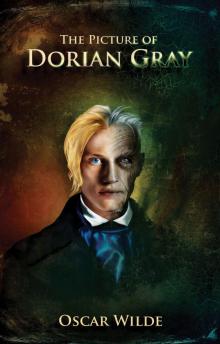 The Picture of Dorian Gray
The Picture of Dorian Gray The Importance of Being Earnest
The Importance of Being Earnest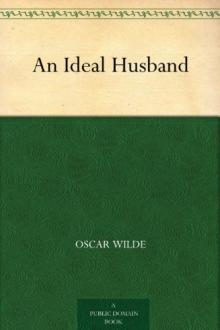 An Ideal Husband
An Ideal Husband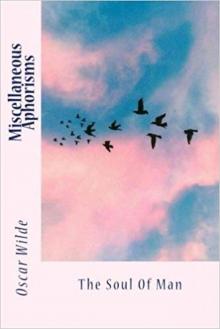 Miscellaneous Aphorisms; The Soul of Man
Miscellaneous Aphorisms; The Soul of Man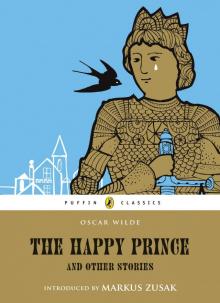 The Happy Prince and Other Tales
The Happy Prince and Other Tales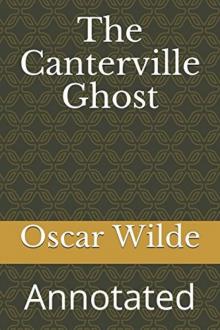 The Canterville Ghost: Annotated
The Canterville Ghost: Annotated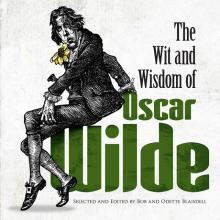 The Wit and Wisdom of Oscar Wilde
The Wit and Wisdom of Oscar Wilde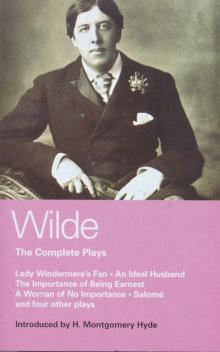 The Complete Plays
The Complete Plays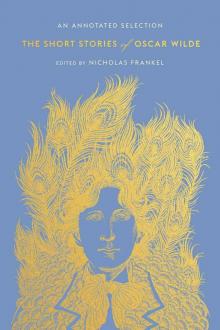 The Short Stories of Oscar Wilde
The Short Stories of Oscar Wilde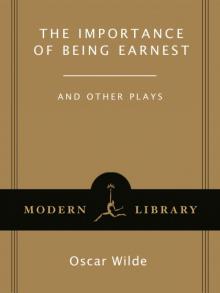 The Importance of Being Earnest: And Other Plays
The Importance of Being Earnest: And Other Plays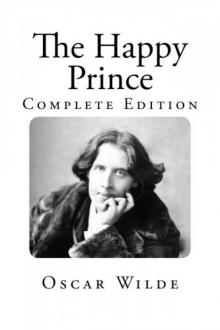 The Happy Prince (Oscar Wilde Classics)
The Happy Prince (Oscar Wilde Classics)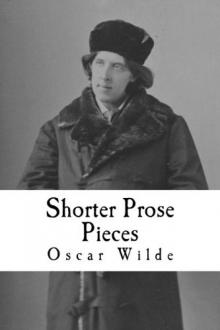 Shorter Prose Pieces
Shorter Prose Pieces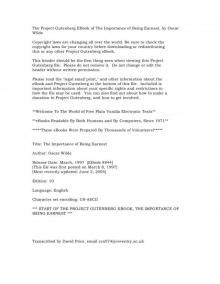 Importance of Being Earnest
Importance of Being Earnest Selected Tales: Shorter Prose Pieces
Selected Tales: Shorter Prose Pieces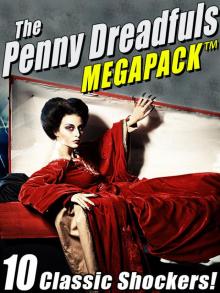 The Penny Dreadfuls MEGAPACK™
The Penny Dreadfuls MEGAPACK™ The Complete Short Fiction
The Complete Short Fiction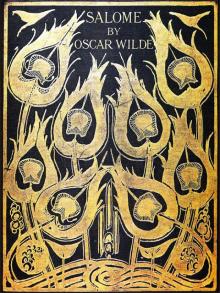 The Illustrated Salomé in English & French (with Active Table of Contents)
The Illustrated Salomé in English & French (with Active Table of Contents)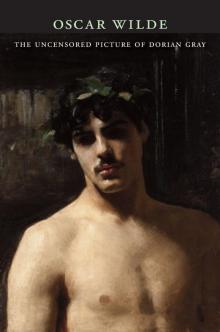 The Uncensored Picture of Dorian Gray
The Uncensored Picture of Dorian Gray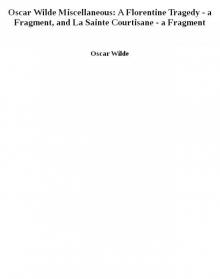 Oscar Wilde Miscellaneous: A Florentine Tragedy - a Fragment, and La Sainte Courtisane - a Fragment
Oscar Wilde Miscellaneous: A Florentine Tragedy - a Fragment, and La Sainte Courtisane - a Fragment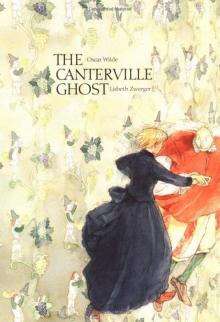 The Canterville Ghost (Illustrated by WALLACE GOLDSMITH)
The Canterville Ghost (Illustrated by WALLACE GOLDSMITH) Complete Works of Oscar Wilde
Complete Works of Oscar Wilde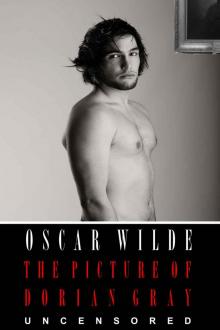 The Picture of Dorian Gray: The Uncensored Original Text (Annotated) (First Ebook Edition)
The Picture of Dorian Gray: The Uncensored Original Text (Annotated) (First Ebook Edition) Fifty Shades of Dorian Gray
Fifty Shades of Dorian Gray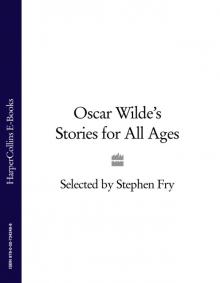 Oscar Wilde's Stories for All Ages
Oscar Wilde's Stories for All Ages The Happy Prince & Other Stories (Puffin Classics Relaunch)
The Happy Prince & Other Stories (Puffin Classics Relaunch)